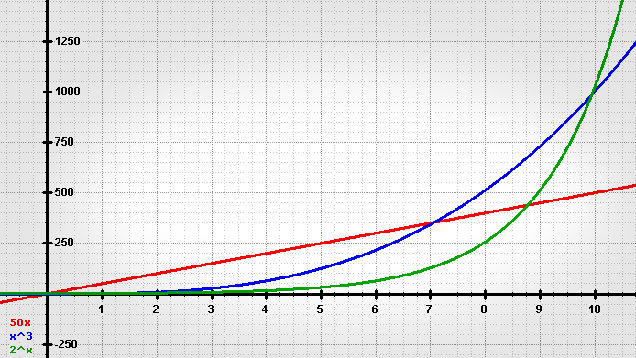When we think of our savings, we tend to think in linear terms. If you save $20 every week for a year, you’ll have $1040 by the end of the year. However, when it comes to saving money (or anything else), linear growth becomes exponential growth the more you do things.
Picture: Wikimedia Commons
The difference between linear growth and exponential growth, in the simplest terms possible, is the difference between a straight line and one that curves upward. Mathematically, this is partially due to things like compound interest. But, as finance blog The Currency of Time explains, it’s not just a maths problem. It’s a habit. The more you save, the more you get in the habit of saving, and the more that saving feels natural. This leads you to save even more:
The important part is the linear bit — just getting started. The exponential component tends to come along as the process evolves… In everything you do or hope to do, remember: “linear is exponential.” Consistent effort leads to larger and larger returns. Conversely, persistent negatives could very well dig an insurmountable hole.
There’s more to your finances than just the maths. Your habits, your tendencies and your personal psychology all play a role. You’re not just saving money when you set aside cash, you’re setting aside habit capital. And everything grows over time.
Linear Is Exponential [The Currency of Time via Rockstar Finance]

Comments